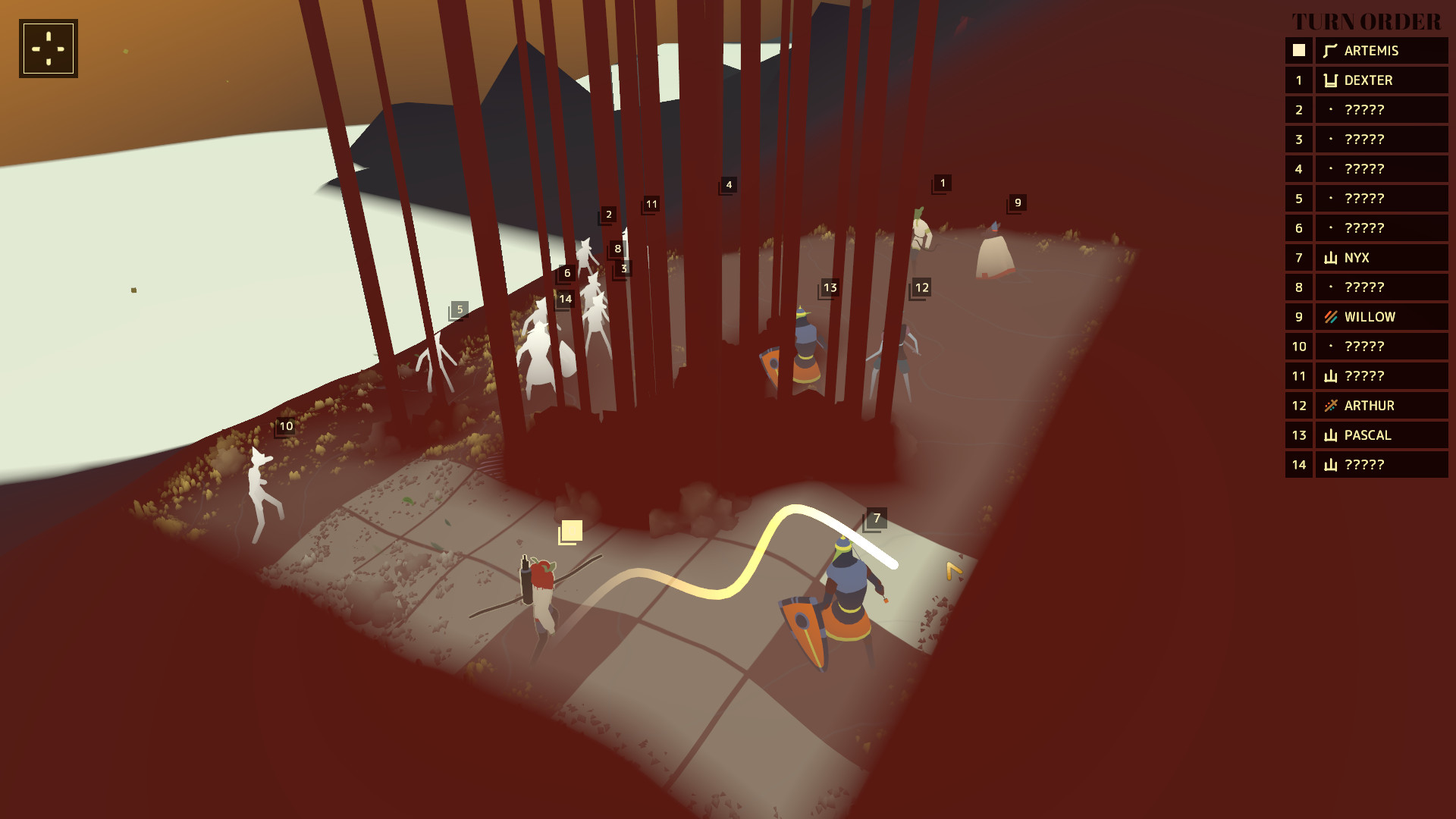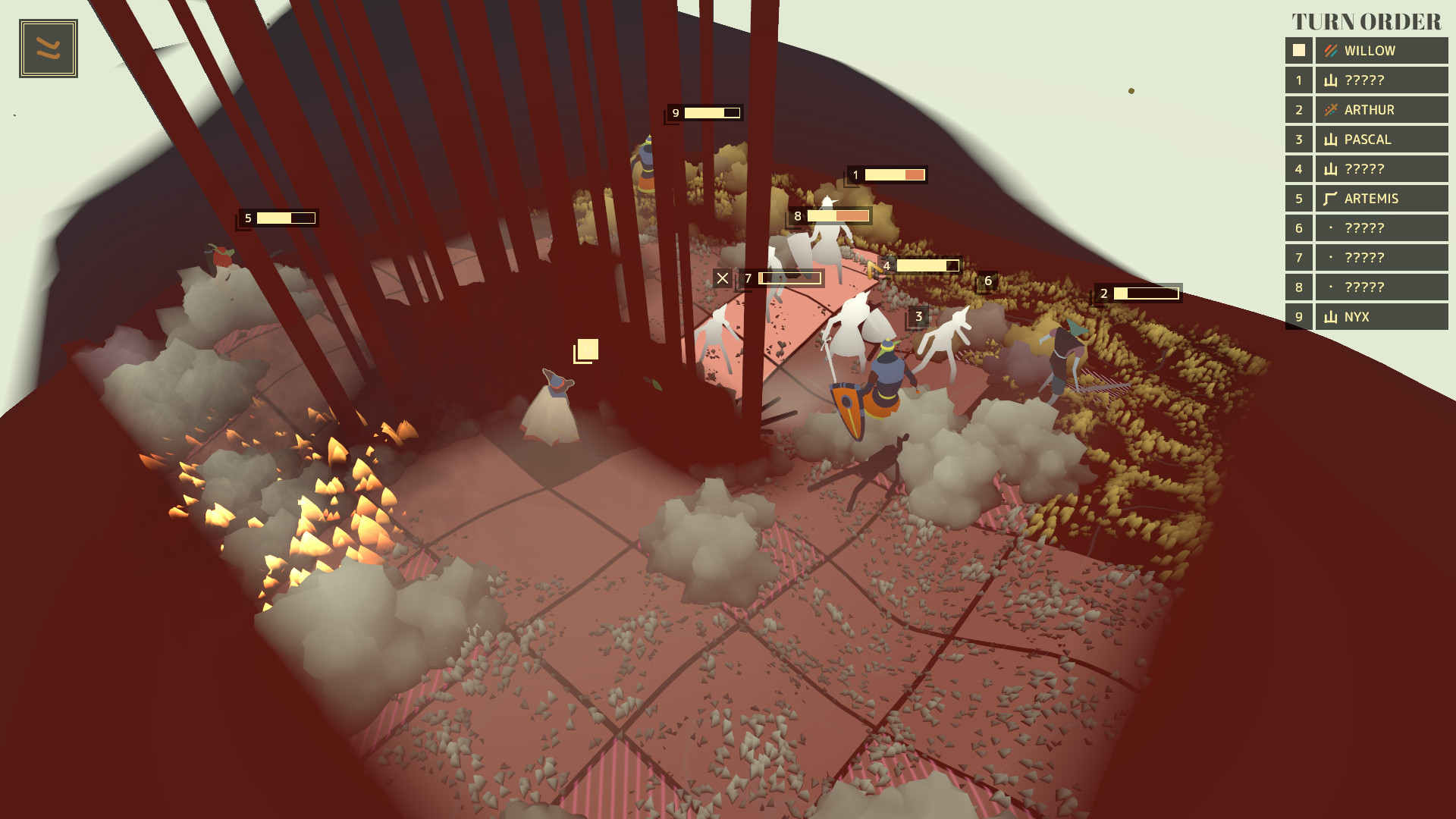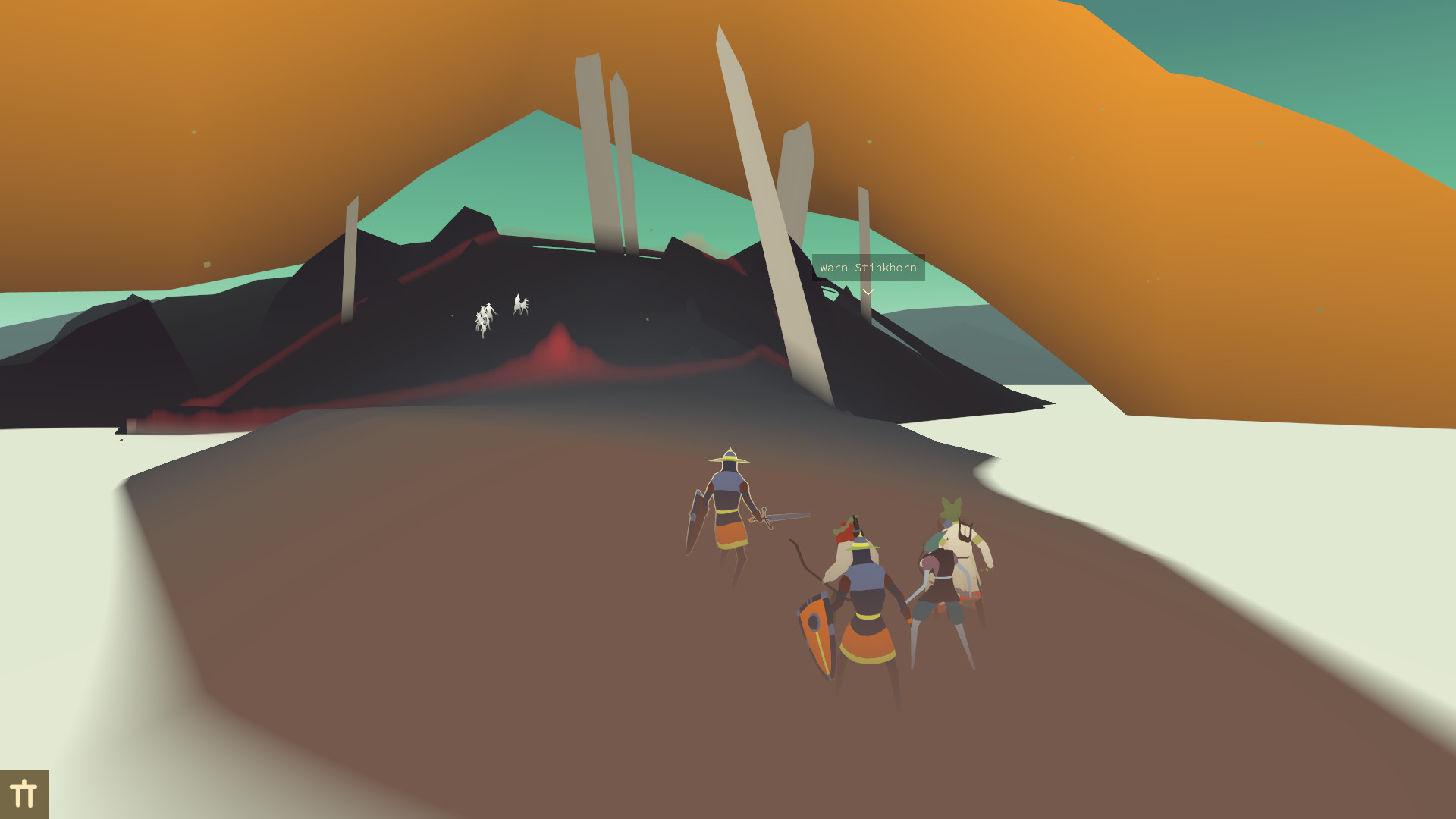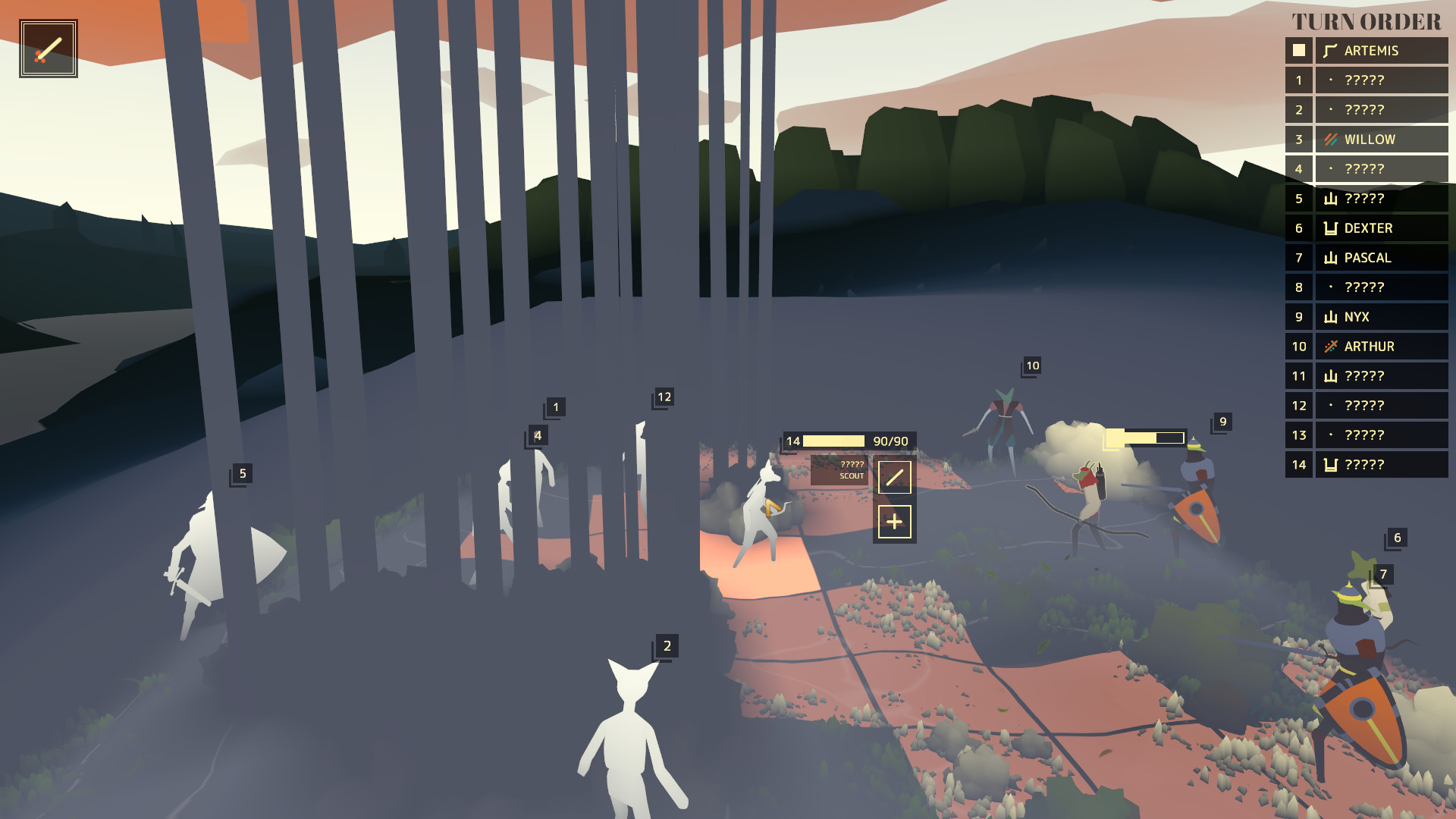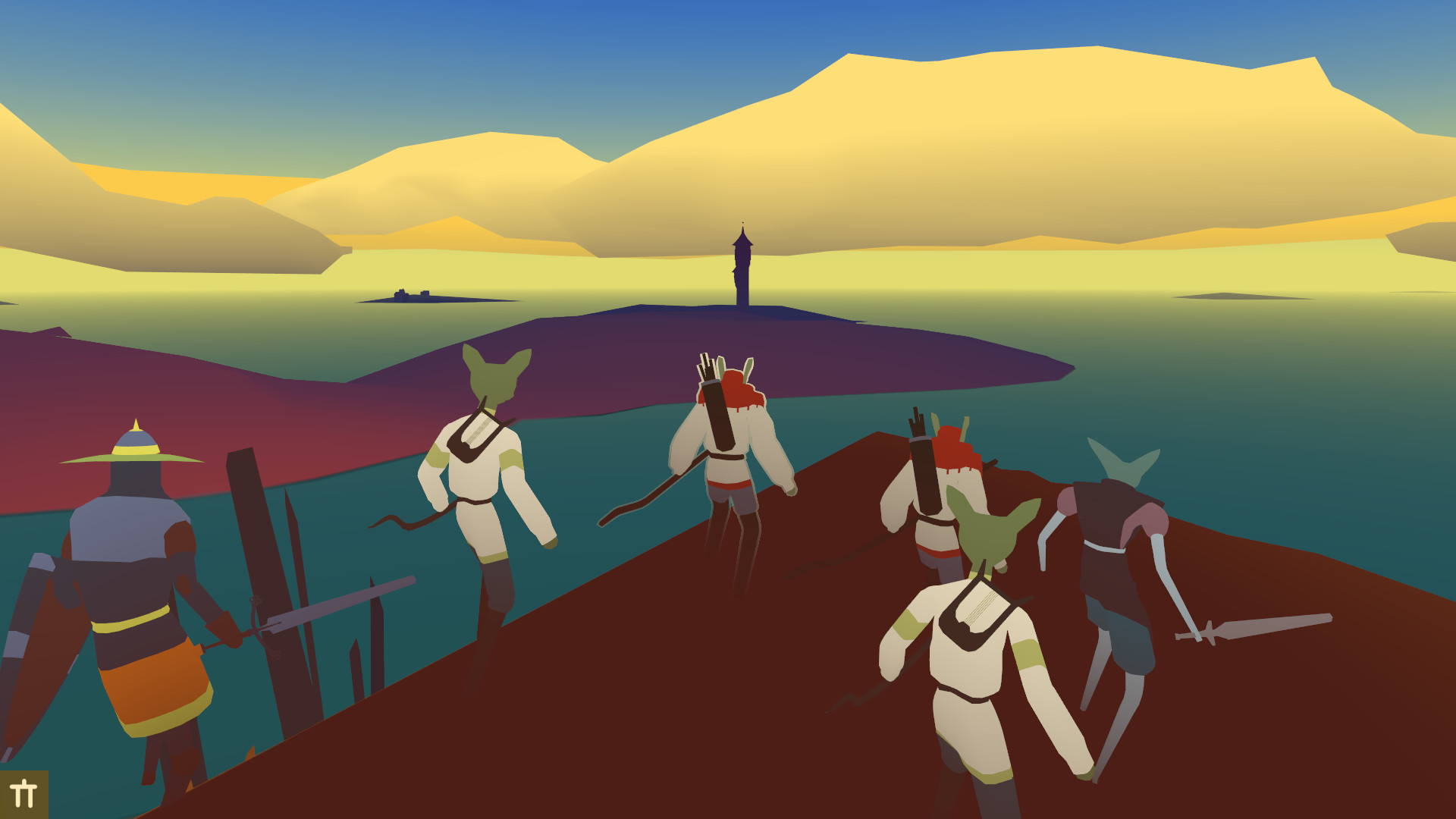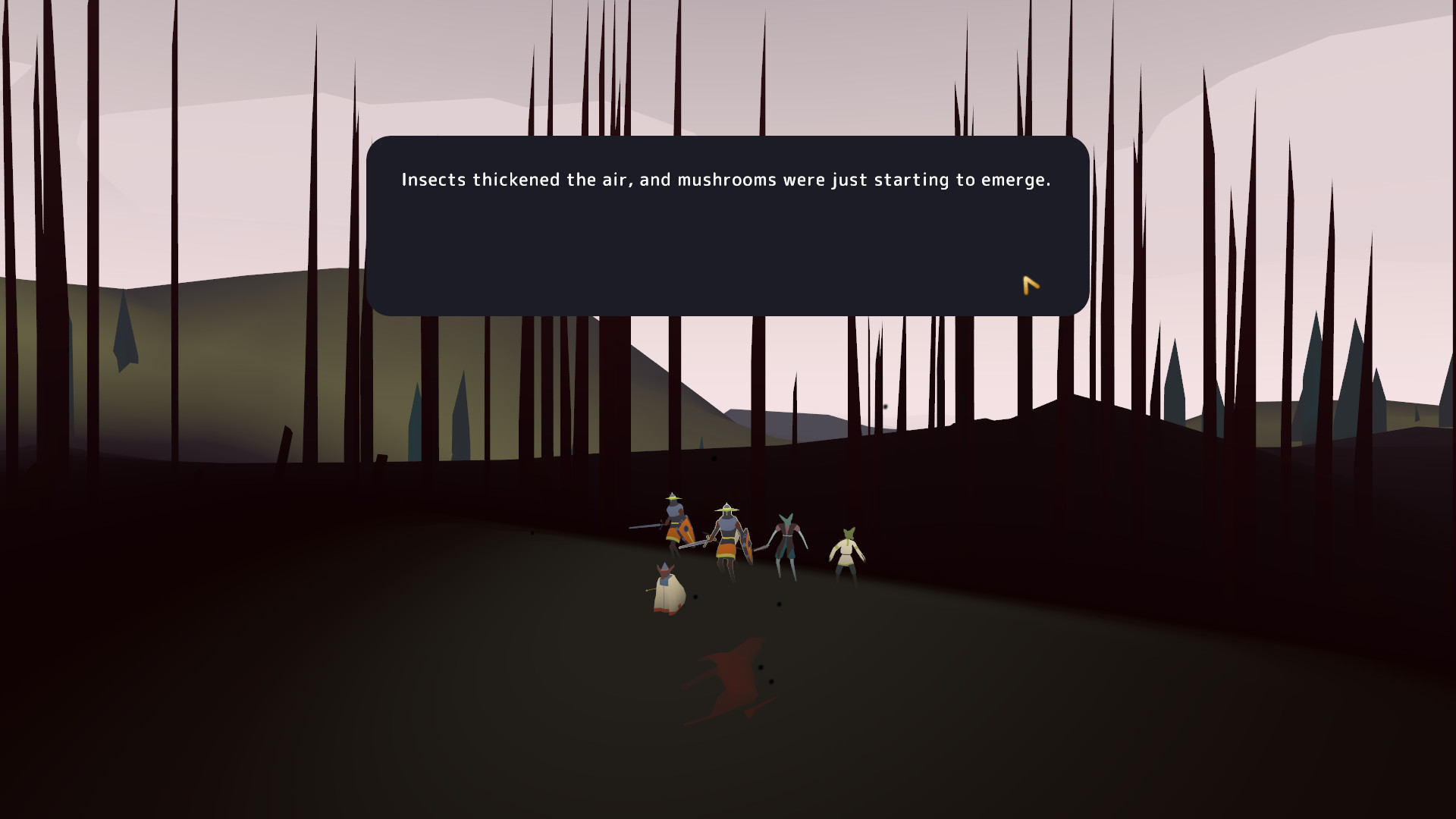For a generation, the terrible Fog - one vast, voiceless, and cruel spirit - has been eating the once-thick forests of the mainland. Now, with nowhere left to call home, and granted magic by the friendly spirits of the archipelago, one small party of would-be adventurers sets out. Find a way to save the many goblin towns of the rocky coast, discover the truth of the Fog, and, if possible, put an end to it.
Raise a ridge of stone to block the enemy's approach. Flick an ember into the brush where enemy archers hide, then push a swell of water to intercept the flames before they endanger your own side. Evolve your party into a well rounded squad to better control the wild complexity of nature, or specialize and hazard the risks.
Featuring:
For now this is a small window into a very large project. Make sure to wishlist and follow (here and elsewhere) so you see updates as more of the game becomes showable!
Raise a ridge of stone to block the enemy's approach. Flick an ember into the brush where enemy archers hide, then push a swell of water to intercept the flames before they endanger your own side. Evolve your party into a well rounded squad to better control the wild complexity of nature, or specialize and hazard the risks.
Featuring:
- vast open-world exploration
- highly interactive natural systems such as terrain height, soil moisture, plant growth, fluid flow, heat and fire
- 25+ goblin evolutions: shamans, druids, warlocks, wights, lavamancers, bog witches, knights, and more
For now this is a small window into a very large project. Make sure to wishlist and follow (here and elsewhere) so you see updates as more of the game becomes showable!
Combat Basics
Except in very special cases, all units have the same move distance: 4 squares. Once you've played for a bit, this helps you develop an intuitive sense of threat zones. Movement is blocked by enemy units and impassable objects like trees - and you can use this fact to create bottlenecks or protect weaker units behind tougher ones. Certain environmental features like steep slopes, thick brush, and deep water are 'difficult terrain,' which afford only one square of movement at a time. Since the environment is constantly evolving, this becomes a crucial tactical element.
A unit's Act options are derived from how its skill points are distributed within its current Evolution. Evolutions have specific character to what skills are available to them, and having a good squad loadout going into a tough fight is crucial. Actions tend to have clear effects (a 100% chance to deal a fixed amount of damage) which interact with the natural systems in ways that become difficult to predict many turns out.

The obvious example here would be FIRE ARROW, which does more damage than the un-upgraded Archer ATTACK action, since it places a lingering burn effect on the enemy, but also can backfire if the fire spreads to your own team.
However there's much more depth to the systems in Tenderfoot than that basic example would imply! For instance, melee attacks have a tendency to destroy plants as a side effect. In the clearest case, this means breaking bushes that would otherwise be 'difficult terrain.' If you're attacking enemies in a bottleneck and breaking apart the brush that's crucially slowing them, you might think twice! And as you develop a deeper understanding of the systems, you realize there's many more results of a simple melee swing. Destroying plants with an attack can break the line of travel for a spreading fire, for instance, so that attacking an 'empty' space might prevent tremendous damage to your weak units. Or it might halt spreading grass, which you may want to prevent from proliferating into a zone of the map where you don't want to see brush popping up. Plant life also drains moisture out of the nearby area, so that destroying plants means making it possible for the terrain to further moisten, which can in the future make the terrain more resilient against fire, and more accepting of life.

One question I've seen from players as they first grapple with the mechanics of the early game is: What benefits are there to modifying the shape of the earth itself? Unless you create a very deep chasm or steep cliff, it doesn't create difficult terrain. Earth modification tends to feel underpowered or pointless, because it doesn't interact so directly.
Although earth modification feels weak at first, it has the most dramatic and long-lasting side effects. The shape of the earth determines the way the water falls across it, which determines plant growth patterns, which determine fire routes and the shape of 'difficult terrain' on the map. So earth magic can exercise a lot of control over the battlefield.
--
Okay I feel like that's enough said for now. What's next? Right now I'm working on the overworld systems, and hoping to show those (along with more hints at the story) with a new video in a couple weeks. While that's in the works, I think it might be interesting to do some little showcase updates on the Evolutions in the game so far. What do you think?
Oh and reminder! I'm looking for streamers who might like this thing. If you, or a friend, or someone you follow might fit the bill, please do let me know, either in the comments or via email at hey@badru.graphics. We're running on a shoestring budget and don't have PR people or a publisher so any support is extremely helpful and appreciated!
Hi folks! First of all - I've started (slowly and individually) distributing access to our pre-alpha combat demo to streamers who play other games like it, or seem interested in the genre. If you know of anyone who might like Tenderfoot, let me know in the comments or at hey@badru.graphics.
Now, I'd like to talk a little about the state of the combat systems as they live in that demo. I'll try not to go overly specific, but it'll be hard for me because I'm neck deep in it!
Turns
Like in Final Fantasy Tactics, your units have individual turns. On a unit's turn it may Act and Move once each, in either order.Except in very special cases, all units have the same move distance: 4 squares. Once you've played for a bit, this helps you develop an intuitive sense of threat zones. Movement is blocked by enemy units and impassable objects like trees - and you can use this fact to create bottlenecks or protect weaker units behind tougher ones. Certain environmental features like steep slopes, thick brush, and deep water are 'difficult terrain,' which afford only one square of movement at a time. Since the environment is constantly evolving, this becomes a crucial tactical element.
A unit's Act options are derived from how its skill points are distributed within its current Evolution. Evolutions have specific character to what skills are available to them, and having a good squad loadout going into a tough fight is crucial. Actions tend to have clear effects (a 100% chance to deal a fixed amount of damage) which interact with the natural systems in ways that become difficult to predict many turns out.
Turn Order
One defining characteristic of Tenderfoot Tactics is the way turn order plays out. Flanking attacks (and certain spells, like the Woods Witch's FROST, or the Knight's INSULT) can push enemies back in the turn order. Because of this, a low damage flanking attack on a powerful enemy might turn the tide of a losing fight, if it puts your endangered, low-health units before that enemy in the turn order, giving them a chance to escape.
Side Effects + Natural Systems
The other essential factor that sets Tenderfoot Tactics apart is that almost all actions have side effects, and that those side effects interact with ongoing natural systems in ways that have a significant impact on play.The obvious example here would be FIRE ARROW, which does more damage than the un-upgraded Archer ATTACK action, since it places a lingering burn effect on the enemy, but also can backfire if the fire spreads to your own team.
However there's much more depth to the systems in Tenderfoot than that basic example would imply! For instance, melee attacks have a tendency to destroy plants as a side effect. In the clearest case, this means breaking bushes that would otherwise be 'difficult terrain.' If you're attacking enemies in a bottleneck and breaking apart the brush that's crucially slowing them, you might think twice! And as you develop a deeper understanding of the systems, you realize there's many more results of a simple melee swing. Destroying plants with an attack can break the line of travel for a spreading fire, for instance, so that attacking an 'empty' space might prevent tremendous damage to your weak units. Or it might halt spreading grass, which you may want to prevent from proliferating into a zone of the map where you don't want to see brush popping up. Plant life also drains moisture out of the nearby area, so that destroying plants means making it possible for the terrain to further moisten, which can in the future make the terrain more resilient against fire, and more accepting of life.

One question I've seen from players as they first grapple with the mechanics of the early game is: What benefits are there to modifying the shape of the earth itself? Unless you create a very deep chasm or steep cliff, it doesn't create difficult terrain. Earth modification tends to feel underpowered or pointless, because it doesn't interact so directly.
Although earth modification feels weak at first, it has the most dramatic and long-lasting side effects. The shape of the earth determines the way the water falls across it, which determines plant growth patterns, which determine fire routes and the shape of 'difficult terrain' on the map. So earth magic can exercise a lot of control over the battlefield.
--
Okay I feel like that's enough said for now. What's next? Right now I'm working on the overworld systems, and hoping to show those (along with more hints at the story) with a new video in a couple weeks. While that's in the works, I think it might be interesting to do some little showcase updates on the Evolutions in the game so far. What do you think?
Oh and reminder! I'm looking for streamers who might like this thing. If you, or a friend, or someone you follow might fit the bill, please do let me know, either in the comments or via email at hey@badru.graphics. We're running on a shoestring budget and don't have PR people or a publisher so any support is extremely helpful and appreciated!
[ 2019-06-01 22:21:58 CET ] [Original Post]
Minimum Setup
- OS: Ubuntu 16.04+
- Processor: 2.5 GHzMemory: 2 GB RAM
- Memory: 2 GB RAM
- Graphics: Dedicated GPU with SM4+
- Storage: 1 GB available space
GAMEBILLET
[ 6455 ]
GAMERSGATE
[ 1556 ]
MacGamestore
[ 4239 ]
FANATICAL BUNDLES
HUMBLE BUNDLES
by buying games/dlcs from affiliate links you are supporting tuxDB

